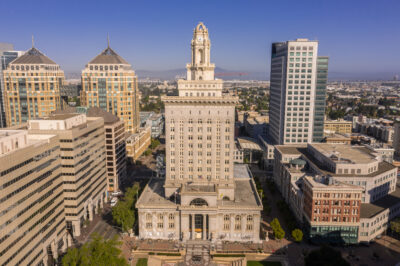How We’re Preparing for More Wildfires and the Big One
California’s hotter and drier climate, paired with a century of fire mismanagement, has created an explosive combination that has contributed to record wildfires in recent years, said Jessica Morse, Deputy Secretary for Forestry at the California Natural Resources Agency, during a meeting this week with the Bay Area Council Water & Climate Resilience Committee. The problem traces back over a century to the creation of the US Forest Service, which was authorized by Congress only after it was agreed that the service would adopt an indiscriminate fire suppression policy. Under that policy, vegetation density has ballooned in California’s forests, resulting in enormous conflagrations capable of burning even California’s naturally evolved fire-resistant trees.
While the Newsom Administration has prioritized and completed 35 emergency vegetation removal projects in the past year, 15 million additional acres require intervention. Bay Area Council members were specifically asked to help devise strategies to jump start California’s wood processing industry, which could include expanding the lumber, wood chips, and cogeneration facilities needed to stimulate demand for excess woody material scattered over California’s forests. Ms. Morse said over 400,000 slash piles were scattered around the Tahoe area alone, and that without processing the rotting material will create methane, a powerful greenhouse gas.
The committee also received a presentation from officials at the East Bay Municipal Utility District on how businesses should be preparing to maintain continuity following an earthquake or another major natural disaster that disrupts water and sewer treatment. Over two thirds of the Bay Area’s water supply is imported from the Sierra Nevada Mountains, crossing three major fault lines. These and other regional faults have a 72% probability of delivering a magnitude ≥ 6.7 earthquakes between now and 2043. Council members were advised to prepare households with food and water for up to seven days, and to prepare to seek water at distribution points after that, while businesses were advised to identify key suppliers, vendors, and partners; to strengthen facilities and secure vital data and documents. See the whole presentation here. To learn more about the meeting and how you can participate in the Bay Area Council Water & Climate Resilience Committee, please contact Anna Sciaruto at asciaruto@bayareacouncil.org.
Featured image courtesy of KGO ABC7 News.




